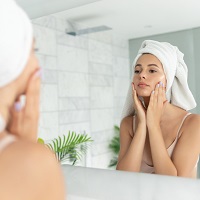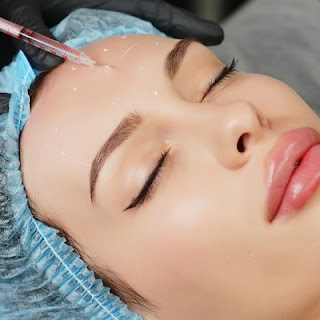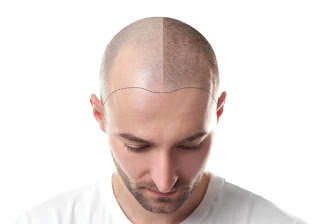Skincare Treatments in Islamabad, Pakistan
Concerned about how you look? Acne, sunspots, scars, wrinkles, and facial pigmentation can be stressful to deal with. Fortunately, the best skin treatment in Islamabad, Pakistan, can be found at Cosmesurge Hospital. There has recently been an increase in the popularity of non-surgical skin treatments that aim to smooth your skin, even out your skin tone, and prevent future acne, fine wrinkles, and scars. The cost of a skin treatment varies depending on what you want to improve, how long you want the treatment to last, and how much recovery time you have. There are many options to choose from.
There are numerous skin problems, both cosmetic and medical, and numerous solutions. We will concentrate on skin care products and methods. The following is a list of some of Pakistan's most widely used skincare treatments:
Chemical peels, laser treatments, whitening of the skin, facial acids, microneedling, and microdermabrasion. Laser therapies:
To improve the color, smoothness, and texture of the skin, lasers use concentrated beams of light energy. "How might laser treatment help my skin?” has been a common question from clients. The response is:
to reduce wrinkles and fine lines.
Treat discoloration, redness, and dark patches for a more even complexion.
Tighten the skin and encourage the production of collagen.
Scars from surgeries and acne should be removed.
Remove any unwanted facial or body hair.
Absolute Lasers:
The outer layers of the skin are removed by ablative lasers, allowing new skin to grow in their place. The laser's penetration depth is determined by the wavelength of the light; Based on your skin type, objectives, and the nature of your problem, your cosmetic surgeon will select the best laser treatment for you. Fractionated lasers, which only remove a small portion of the skin in the treatment area, are now being used by a growing number of cosmetic surgeons. Because of this, the laser is able to safely penetrate deeper layers of the skin, resulting in more dramatic and less painful results.
Non-Ablative Lasers:
Lasers that do not penetrate the skin's surface are called non-ablative. Instead, they work by heating the skin below the surface to help restore the skin's natural firmness and tone and encourage the growth of new collagen. New skin cell and collagen formation take many months to fully show up, and persistent treatment side effects like pink skin at the treatment site can take several weeks to go away. Nevertheless, each patient is unique. You will learn about the kinds of outcomes that can be expected from various laser treatment options from your cosmetic surgeon.
Who Should Consider Laser Therapy?
Ablative lasers may be more beneficial for skin treatments for people with fair skin. In some people, non-ablative versions may make the skin darker rather than lighter. Together with you, your dermatologist will look at your discoloration and your overall skin tone to determine the most effective treatment for your skin.
2. Chemical Peels:
Using a chemical treatment that causes the outer layers of the skin to peel is another way to treat the skin. Cosmetic surgeons talk about a chemical peel. Most of the time, a chemical peel is done in the office of a cosmetic surgeon, either by the surgeon or a nurse or aesthetician with the right training. A solution is applied to your skin using a brush or swab during the treatment and left on for a predetermined amount of time. In the days following treatment, the affected skin layers will gradually peel away, revealing a complexion that looks smoother and younger.
The question, "How can a chemical peel enhance or improve my skin," has received a lot of attention. The response to this query is:
Reduce or eliminate the appearance of dark patches, pigmentation, lines, and wrinkles.
The skin's surface creases and wrinkles can be smoothed out.
Reduce or get rid of acne scars and smaller scars from accidents or surgeries.
Brighten the complexion and tighten and tone the skin.
It is necessary to get rid of keratoses and precancerous growths.
Deep chemical peels vs. light ones:
Depending on the treatment, a peel can typically be classified as light, medium, or deep. Light chemical peels typically use a softer acid solution like glycolic acid, alpha hydroxy acid, salicylic acid, fruit enzymes, or a low concentration of trichloroacetic acid to penetrate the epidermis, the skin's outermost layers. Under the supervision of a cosmetic surgeon, a qualified and experienced aesthetician can safely administer light peels with little to no downtime. Deeper peels are used to treat more severe signs of aging like deep wrinkles, extensive sun damage, or severe acne scars because they go deeper into the epidermis or even the dermis. A peel will be recommended by your cosmetic surgeon based on your skin type, the problems you want to fix, and the depth of the peel needed to get the results you want. There are a few improvements that can be easily seen after a chemical peel: skin that is brighter, feels tighter, and has a more even tone. However, the effects of a peel build up over time, and many patients believe that for the best results, they need to get the treatment again and again.
Who Should Consider Using a Chemical Peel on Their Skin?
Chemical peels are effective for both men and women, and if you have:
Melasma, age spots, dark spots, sun damage (a problem with tanning), blotchy, patchy skin, and dark spots all require a chemical peel.
In Pakistan, the cost of a chemical peel ranges from 500 to 3,000 PKR. It is highly dependent on the doctor's experience and qualifications, as well as the location.
3. Dermabrasion and microdermabrasion:
A third type of skin treatment is mechanical exfoliation, in which an instrument is used to slough off the outer layers of the skin to reveal smoother, healthier, and younger-looking skin. Two examples of such treatments are microdermabrasion and dermabrasion.
Microdermabrasion:
The gentle process of microdermabrasion can be applied to the body, hands, face, or neck. During treatment, the area is exfoliated with a very fine-tipped tool or a tiny mist of abrasive particles. The exfoliated skin is immediately sucked away. In contrast to some other skincare procedures, microdermabrasion is safe for all skin types, has a low risk of side effects, and doesn't require any downtime. What are the advantages of microdermabrasion for the skin?
Reduce the appearance of crow's feet and other fine lines and wrinkles.
Improve skincare products' performance.
Brighten and tone your skin.
Reduce the appearance of moderate acne scars or age spots.
Who ought to test this?
Surface scars respond more favorably to microdermabrasion. You can find out if this treatment is right for you from your dermatologist. Additionally, it is effective for people with lighter skin tones.
Dermabrasion:
Dermabrasion is more powerful than microdermabrasion. During treatment, a cosmetic surgeon will precisely remove skin layer by layer from the treated area using a swiftly spinning device or blade until the required depth is reached. Because it penetrates deeper into the skin's surface and can affect pigmentation, dermabrasion is not recommended for all skin types. To ensure their comfort during and after treatment, patients typically receive either local or topical anesthesia. What positive effects does dermabrasion have on the skin?
Reduce the appearance of smile lines, vertical lip lines, and other wrinkles on the face.
Scars from acne and other flaws should be removed.
balancing the complexion and smoothing the skin Who Should Try This?
Dermabrasion may be an excellent alternative if you want to reduce pigmentation more quickly than with microdermabrasion. Lighter skin types work best with it. Individuals with medium complexions might get further hyperpigmentation because of the medical procedure. After about two months, the new hyperpigmented patches might ease up.
4. Microneedling:
Microneedling is a skin reemerging methodology that tackles the skin's normal mending system to fix UV harm and reestablish a smoother, more clear composition. With a device that contains dozens of very fine, short needles, microneedling causes microscopic "injuries" in the skin rather than removing layers of skin with heat or chemicals. Although the "injuries" are not visible to the naked eye, they do trigger your skin's natural healing response, resulting in the production of new collagen and elastin and the regeneration of healthy skin cells. What skin problems might be alleviated by microneedling? The response is:
Acne scars or surgical scars; wrinkles and fine lines; large pores or visible pores. Sun damage, age spots, and hyperpigmentation are all signs of sun damage.
Because microneedling does not use chemicals or lasers to remove skin layers, it is generally safe for all skin types, even darker skin. Stretch marks; rough areas; and texture issues In addition, microneedling requires little downtime and does not result in any "peeling" after treatment for most patients. However, the results may not be as dramatic as those from more severe treatments, and multiple microneedling sessions are typically necessary to treat specific skin issues in a single area.
5. Facials:
We don't just mean the face, either; Facials on the back are also important. Facials make the skin look better and give it an instant glow. A soothing facial, a brightening facial, and an antioxidant and anti-aging facial are just some of the facials available. Fly facials scrub and peel the skin with constrained air, while dark vinegar facials assist with unclogging obstructed pores. The skin gets the vitamins, nutrients, and hydration it needs from a facial. A facial is a great way to heal and regenerate the skin while also protecting it from sun, sweat, smoking, and other harmful factors.
Facials in Photos:
Intense Pulse Light (IPL) therapy is used in these professional skin treatments to treat a variety of skin problems like freckles, redness, acne, sun damage, and signs of premature aging. Additionally, any part of the body can be treated with a photo facial.
6. Skincare Medicines (Face Serums and Acids):
The top layer of your skin is hydrated or exfoliated by some acids and face serums. New skin cells appear to take their place after you exfoliate your skin. This skincare treatment helps even out the tone of the skin. Cosmetics and drug stores carry a wide variety of acids for the face. Some popular alternatives are:
Alpha hydroxy acids include tartaric, lactic, citric, malic, and glycolic acids.
the acid kojic; the acid azelaic.
the vitamin C with salicylic acid (l-ascorbic acid).
Who should I apply facial serums and acids to?
Lighter skin tones can treat mild hyperpigmentation with face serums and acids. You can get assistance from our top dermatologist in locating the cause of your hyperpigmentation and devising an effective treatment plan.
7. Whitening Treatment for Skin:
Lightening creams are Islamabad skin whitening treatments that use specific chemicals to lighten your skin's tone and reduce pigmentation. Prescriptions are required to purchase many of these lotions. To gradually lighten the skin, they are frequently applied once or twice daily. There are also gel-based treatments for lightening. Common ingredients in over-the-counter lightening products include the following:
niacinamide (N-acetylglucosamine) from licorice extract Who Should Try This?
Using whitening gels or lotions is a good option for treating flat spots like melasma and age spots. They work well for areas of most skin types with discoloration. Hyperpigmentation can be treated with these products, which are more accessible and sometimes less expensive than professional treatments, but they take longer to work.
STEP UP:
You have a lot of options for treating your skin, from getting rid of fine lines and wrinkles to getting rid of acne or sunburn scars. Counsel your dermatologist prior to going through any treatment to affirm that the interaction will be viable and alright for you!




Comments
Post a Comment